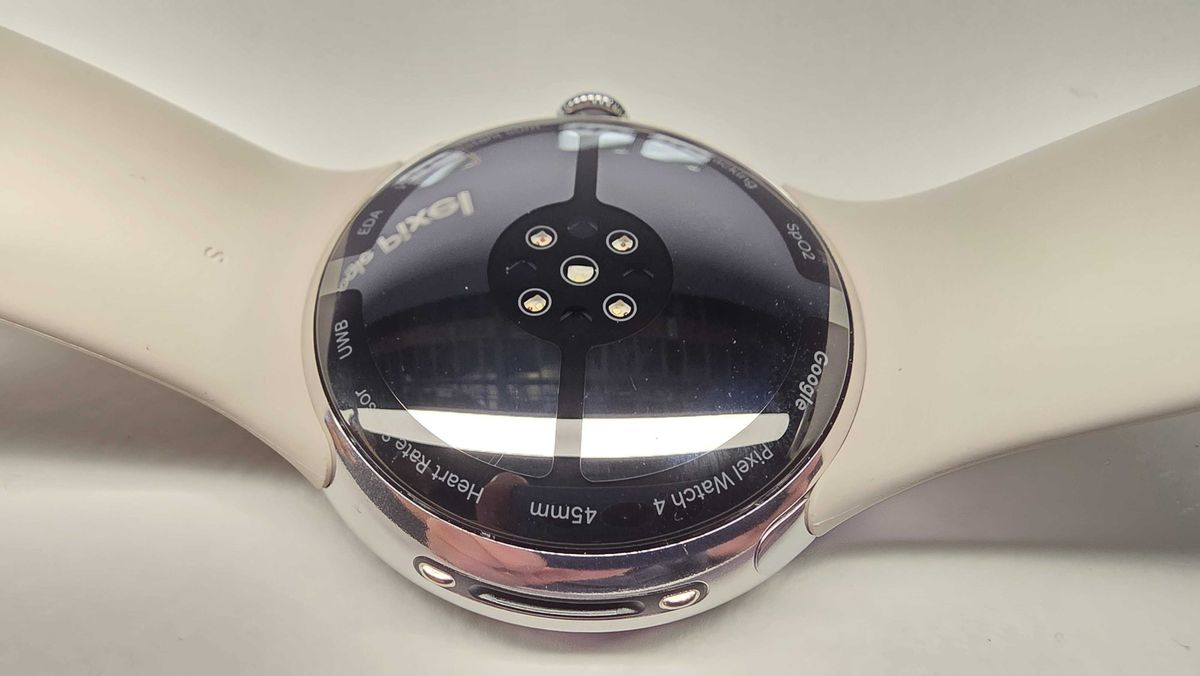Our Experts

Our expert, award-winning staff selects the products we cover and rigorously researches and tests our top picks. If you buy through our links, we may get a commission.
- 9 Houseplants You Couldn't Kill if You Tried, According to Experts
- Houseplants that are impossible to kill
- What is the No. 1 reason houseplants die?
- Succulents need light but are good for neglectful plant parents
Even those born without a green thumb can ensure these plants thrive.
David Watsky/CNETNobody sets out to kill their houseplants but life happens, doesn't it? With busy schedules and unpredictable indoor climate (a smart thermostat may be able to help), houseplants are easy to buy and admire but often hard to keep alive.
Your best defense against serial plant killing is to saddle yourself with plants that are easy to care for and hard to kill. That mostly means plants that can handle the occasional human-inflicted draught or changes in temperature and light exposure.
There are hoards of beautiful indoor plant species that can handle low light, full sun, infrequent watering and other adverse conditions. We asked two bona fide plant specialists about the hardest houseplants to kill for budding plant parents or those with unpredictable schedules.
Rebecca Sterling serves as resident plant expert for Easyplant and Puneet Sabharwal is the founder of Horti, a plant subscription service that sends a potted plant each month. Both shared their take on why most houseplants die in the first place along with picks for the easiest plants to care for.
For more, see where to put houseplants for maximum growth and read this list of plants that keep bugs away.
Houseplants that are impossible to kill
The ZZ plant is popular among houseplant enthusiasts for its low maintenance. It's hardy and easy to tend to. It features thick, leathery leaves and rhizomes that store water, making it tolerant to neglect.
The ZZ prefers soil that is kept consistently moist but not wet or soggy. Depending on the size of the pot and the environment, you should water the plant about every seven to 14 days.
Be sure to check the soil before watering to make sure that it is not overly wet and allow the top few inches of soil to dry out before watering again. Additionally, make sure the pot has proper drainage as standing water can cause root rot.
Care tips:
"Since the ZZ plant thrives in bright indirect light, placing it in a spot near a window is ideal."
-Sabharwal
"If you need to prune it, avoid leaving a bare stem. Prune it low or just above a leaf to help it keep a natural look."
-Sterling
Parlor palms are great for beginners because they are forgiving. The leaves of this palm grow in dense, feathery clumps, Sterling says, so even if it's time to remove a few leaves your palm will continue to have a full, lush look.
Care tips:
"This plant appreciates a healthy amount of humidity so if you feel like the air in the room is too dry for you, then it's too dry for your plant as well. Time to add a humidifier or pebble tray to increase the humidity near the plant."
-Sterling
These iconic houseplants are resilient and hard to kill due to their ability to adapt. They have aerial roots, which allow them to cling to surfaces and obtain moisture and nutrients from their surroundings. This means the plant can survive in many different kinds of conditions, including low light, high humidity and even low water availability.
How do they do it? Monstera plants can store water in their thick, fuzzy leaves to help them stay hydrated in dry conditions. Finally, the plant has an extensive root system which helps to anchor it in place and also allows it to search for sources of water and food from farther away.
Siltepecana plants sport narrow green leaves with silver markings. They enjoy bright, indirect light but adapt well to lower light, too. Just avoid direct sunlight as it can scorch the leaves.
Care tips:
"Monstera siltepecana plants should be watered regularly, but allow the soil to dry out slightly between waterings. To avoid overwatering, check the soil moisture level before watering. If the top inch of soil is dry, it's time to water."
-Sabharwal
Hoyas are amazing houseplants that can last decades and are the kind of plant people pass down through generations. I love the elegant character of Hoyas because the vines can be encouraged to grow bushy or compact. Their thicker, waxy leaves help make Hoyas resilient to lower humidity than thin-leaved plants. You can create quite a collection of Hoyas with different variegation.
Care tips:
"Hoyas can take years for them to bloom, especially if they aren't receiving enough light. After the blooms fall off, don't prune off the part of the stem where the flowers formed, called the Pendacule, since there's a good chance the next round of blooms will emerge from the same spot."
-Sterling
Also known as the Chinese evergreen, Aglaonema Siam Pink plants have unique patterns on each leaf and have been grown in Asia as ornamental plants that have been known to bring good luck for centuries. In summer, it may bloom small flowers that eventually turn into berries.
This plant is hard to kill and can tolerate a range of conditions including low-light environments. "They have a slow growth rate," Sabharwal explains, "so they don't require frequent pruning or maintenance."
Care tips:
"These plants like indirect sunlight and can adapt to slightly low-light areas. If you use a humidifier in your bedroom to keep air moist, place the Aglaonema Siam Pink there. It prefers a slightly humid environment and will look lovely on your nightstand."
-Sabharwal
Pothos are particularly good at cleaning the air in your home and the vining variety is great for beginners. They have a matte-like texture and feel a bit velvety texture, hence the satin nickname.
It is considered one of the most indestructible houseplants because of its hardiness and ability to tolerate a variety of conditions including drought, low light and even a bit of neglect. The Satin Pothos can survive in low-medium light but the variegation (multicolors) shows best in bright light.
Care tips:
"Satin Pothos plants can grow quite large so find a place in your home for it where it can spread out and flourish and keep it away from direct sun."
-Sabharwal
"If you notice that their newer leaves [have] changed size, that's just this plant's way of adapting to [the] lighting conditions you chose for them. Talk about resilience"
-Sterling
This popular species is familiar to plant parents, new and seasoned. The snake plant is known for being drought tolerant, according to Sabharwal, and surviving in low-light and direct sunlight situations. Sansevieria are succulent plants with strong, stiff, plastic-like leaves that store water.
Care tips:
"Although it's rare to see indoors, Sansevierias can bloom. This may be exciting but make sure to prune off the flowering stem before the flowers begin to drip a sticky nectar."
-Sterling
"Treat it like a succulent when providing care since it has large root balls that store water for drought conditions."
-Sabharwal
Sabharwal touts this versatile plant for its ability to sustain abuse. The baby rubber plants have succulent-like properties, which means that they can store moisture in their fleshy stems or leaves that act as backup reservoirs. These are "easy to care for" plants and are easily propagated by cutting a stem or leaf and submerging it in water until roots develop.
Care tips:
"Overwatering can lead to root rot so it's important to let the soil dry to the touch before watering again. This charming plant thrives in moderate to bright indirect light but can also tolerate lower light conditions. Too much direct light can scorch the leaves."
-Sabharwal
This heart-leaf philodendron is native to South America. Its leaves, colored in strokes of yellow and green, resemble the flag of Brazil -- hence the name. The Brazil is a vining plant and grows quite long, up to 10 feet if untrimmed. It's a popular hanging plant but can also be trained to climb a moss pole or trellis.
Philodendron Brasil does well in medium to bright indirect light, according to Sabharwal. It can tolerate low light but its variegation will become more pronounced and vibrant with more light exposure. Direct sunlight should be avoided as it can burn the leaves.
Care tips:
"Water this philodendron when the top inch of soil feels dry. It's important to avoid overwatering, as the plant is susceptible to root rot. Ensuring the pot has good drainage will help prevent water from sitting at the bottom and harming the plant."
-Sabharwal
Both plant experts point to overwatering as the No. 1 cause of plant death.
Getty ImagesBoth experts call out overwatering as the most common mistake people make that kills houseplants.
As a guard against overwatering, Sabharwal recommends pots with drainage, especially if you are a new plant parent. "Excess water often gets clogged at the bottom of pots with no drainage and it can cause the plant roots to rot. With drainage holes, you should water your plants generously each time until the water starts to trickle out the bottom. Let the plant absorb what's in its flow-through tray and after a few hours, discard the remainder."
Sterling touts EasyPlant's signature self-watering pot system as a natural fix. "Customers don't have to worry about overwatering." Besides that, Sterling points to a bad habit folks have of starving plants of light.
"Many people think that low light means their plant will thrive and continue to grow even if it's only receiving an hour or two of light a day," she says. "In reality, most tropical houseplants can adapt to less-than-ideal natural light conditions but they still need a consistent light source."
Cacti and succulents thrive with infrequent watering.
Getty/Isabel PaviaSucculents are mega-popular in interior spaces, accenting desks, kitchens and everywhere in between. While they do require a decent amount of natural light (most prefer full, direct sun), plants in the succulent family don't need much water at all.










 English (US) ·
English (US) ·